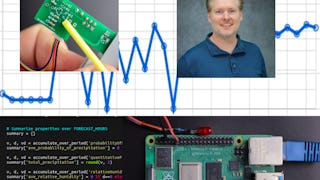This course features Coursera Coach!
A smarter way to learn with interactive, real-time conversations that help you test your knowledge, challenge assumptions, and deepen your understanding as you progress through the course. Take your Raspberry Pi and Arduino skills to the next level by exploring advanced techniques and building real-world applications. You will learn to set up, configure, and communicate between Raspberry Pi and Arduino, enabling you to tackle complex tasks like serial communication, bidirectional messaging, and automation. By the end of the course, you’ll be equipped with practical skills to combine hardware and software to create dynamic, interactive systems. Throughout the course, you will move through a structured journey starting with an introduction to both platforms and how to install and configure them. You will progress by learning serial communication, troubleshooting connection issues, and working through various hands-on projects that combine Arduino hardware components with Raspberry Pi functionalities. These projects will test your understanding and give you the opportunity to apply your knowledge to real-world challenges. In later sections, you’ll dive into more advanced topics such as integrating cameras, setting up Telegram bots, and creating a complete intercom system. You will also solve problems using real-world scenarios, like sending notifications and taking photos with Python, setting RGB LED colors via Telegram, and even managing access to systems remotely. This course is designed to challenge your skills, helping you develop a deeper understanding of both platforms. This course is perfect for those with a basic understanding of Raspberry Pi and Arduino who are looking to expand their skill set and dive into more advanced applications. It is suitable for hobbyists, engineers, and anyone passionate about hardware development and IoT projects. Basic knowledge of electronics and programming will be helpful but is not required.




 enthalten
enthalten














